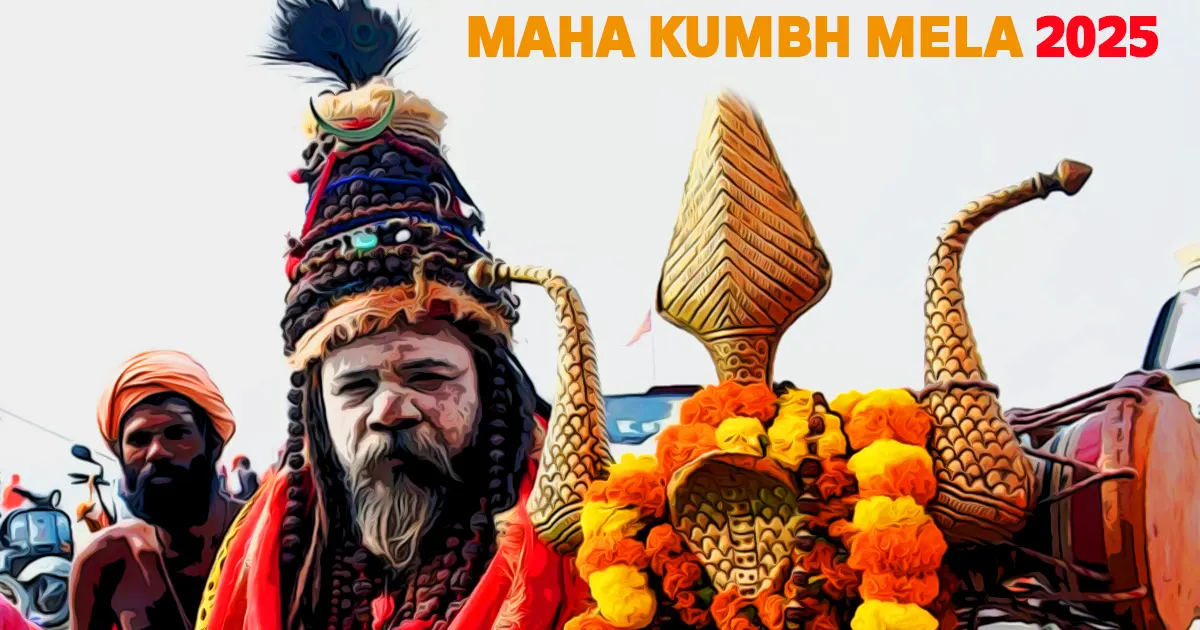GS-1-Culture

The Maha Kumbh Mela is scheduled to take place in Prayagraj from 13th January to 26th February 2025.
What is the Kumbh Mela?
- The Kumbh Mela is one of the largest religious gatherings in the world, held at four sacred locations in India: Haridwar, Ujjain, Nashik, and Prayagraj.
- Each of these cities is situated along the banks of a holy river—Ganga, Yamuna, and Saraswati in Prayagraj, Ganga in Haridwar, Kshipra in Ujjain, and Godavari in Nashik. During the event, millions of devotees converge to bathe in these rivers, believing that it cleanses them of sins.
- The Kumbh Mela is tied to astronomical events: it commences on Makar Sankranti, when the Sun and Moon align in Scorpio and Jupiter enters Aries. This period is considered spiritually auspicious for purification and self-realization.
- The Ardh Kumbh (half Kumbh) is celebrated every 12 years in these locations, and Prayagraj also hosts it every 6 years, alternating with the full Kumbh. The last full Kumbh at Prayagraj was held in 2013.
The Kumbh Mela is held in four locations in India and occurs in different forms, primarily based on its frequency and scale. These types include:
- Maha Kumbh Mela: This is the largest and most significant of the Kumbh Mela events, celebrated once every 12 years at one of the four locations—Prayagraj (Allahabad), Haridwar, Ujjain, or Nashik. It is marked by an overwhelming number of devotees, often in the millions, who come together for ritual bathing in the sacred rivers. The last Maha Kumbh Mela was held in 2013 at Prayagraj, with the next one scheduled for 2025.
- Ardh Kumbh Mela: Held every six years in Prayagraj, this is the “half Kumbh” that occurs between the full Maha Kumbh Mela. Although smaller in scale than the Maha Kumbh, it still attracts millions of devotees. The last Ardh Kumbh was celebrated in 2019 at Prayagraj.
- Kumbh Mela (Regular): Occurs every 12 years in each of the four cities (Haridwar, Ujjain, Nashik, and Prayagraj). The cities rotate based on a cycle that determines when each location hosts the Mela. The frequency of this event in each city is a part of the ancient Hindu tradition linked to celestial alignments.
Historical Context of Kumbh Mela
- The origins of Kumbh Mela date back thousands of years, with mentions in ancient Vedic texts and the Mauryan and Gupta periods (circa 4th century BCE to 6th century CE). The event was considered a prestigious gathering for pilgrims across the Indian subcontinent.
- During the Gupta dynasty, the Kumbh Mela’s status as a significant religious event was further solidified. The festival also received royal patronage during the medieval period from various empires like the Cholas, Vijayanagar, Delhi Sultanate, and Mughals, with notable figures such as Emperor Akbar attending the Mela, symbolizing religious tolerance.
- Under British rule, the Kumbh Mela was documented as a phenomenon of immense scale, astonishing colonial observers with its vast gatherings. Post-independence, the Mela gained significance as a symbol of national unity and India’s rich spiritual heritage.
- In 2017, UNESCO recognized the Kumbh Mela as an Intangible Cultural Heritage of Humanity.
UNESCO’s Role and India’s Heritage
- The United Nations Educational, Scientific, and Cultural Organization (UNESCO) aims to promote global peace and security through education, science, culture, and communication. Established in 1945, its headquarters are in Paris, France. It maintains the World Heritage Sites list, selecting and overseeing significant cultural and natural landmarks worldwide.
- India boasts 43 UNESCO World Heritage Sites, which include 35 cultural, 7 natural, and 1 mixed heritage sites, with the Kumbh Mela being a remarkable intangible cultural heritage.




